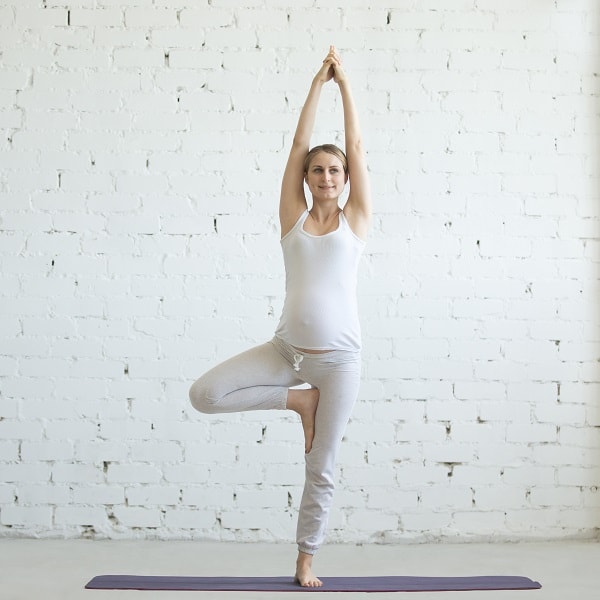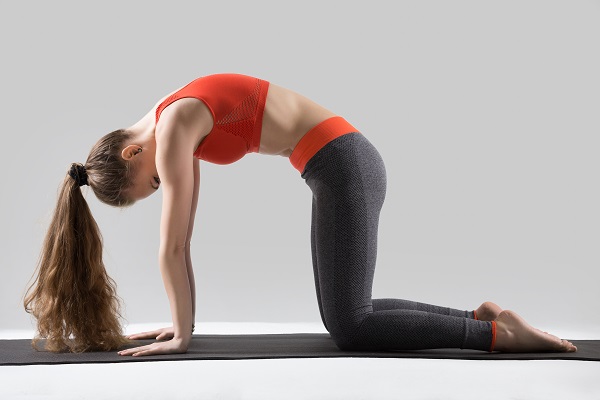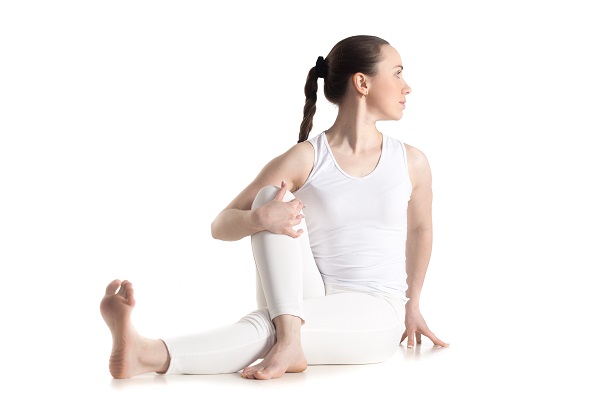
These yoga poses are good for beginners. They are easy to practice and stretch and get started with yoga at home.
Yoga exercises help in many ways. People do yoga exercises to stay fit and healthy, both physically and mentally. In the initial stage, we require some easy poses to relax and lose our muscles. Then gradually we can switch over to harder yoga poses.
The yoga poses meant for beginners are calm and gentle, and beginners would like to do them. Here are some yoga exercises which help in stretching the muscles present in the back and by that the back pain reduces.
Family medicine practitioner and yoga instructor Dr R. Bhuvaneswari shares tips for yoga beginners.
1. Mountain Pose (Tadasana)
This is one of the best yoga exercises for the beginners. This is easy and you can do it comfortably.
Stand straight by keeping your feet close to each other. Hold your hands in namaskar mudra and keep it near your heart. Make your body erect and try to lift both the shoulders towards the ceiling. Concentrate on allowing the energy to pass from your feet to your hands and also to the whole body parts.

Precautions:
- Avoid practicing this asana for too long as prolonged standing may cause strain on the muscles of the legs.
- Don’t put too much pressure on the knees as it may cause pain in the knees.
- People suffering from any of this condition should avoid practicing this asana: migraine, insomnia, joint pain or low blood pressure.
2. Tree Pose (Vrikshasana)
First do mountain pose. Then lift the left foot and put flat on the inner side of right thigh as shown in the picture. The toes of your left foot should be just above the right knee and keep the hands at your heart in namaskar mudra.
Like mountain pose, you have to stand erect pointing your shoulders and fingers towards the ceiling. You can also do this pose by raising your arms upward and it will help more in toning the muscles.

Precautions:
- Those people who have a problem with a headache should not do this easily.
- Patients with blood pressure should not do this posture too.
- If you have any disorders related to insomnia or sleep, you should stay away from this posture.
3. Cow Pose (Bitilasana)
People having back pain should practice this yoga pose. It works tremendously in easing back ailments. This pose is usually carried out with cat pose in a “flow”. It means that these two yoga poses are done one after another.
Maintain your hands at shoulder width apart, and knees at hip-width apart. Look upward and curve your back with breathing out and push your butt out at the back of you.

Precautions:
- If you have a sensitive neck, do not crunch the back of the neck too much as you look up. It is best to look forward to avoiding the strain. Also, make sure your shoulders are away from your ears.
- Consult a doctor before you do this pose in case you have a neck injury. It is best to practice yoga under the supervision of an expert.
4. Cat Pose (Marjaryasana)
After performing cow pose, round your back by pushing it towards the ceiling with breathing in. You need to practice cat and cow pose together with taking deep breaths for best results. They are opposite to one another and by performing these poses you have to move your body in different directions. If you put strain on a specific part of the body, you have to do the opposite pose to make free that tension.
These two poses are best for beginners to loosen the muscles of the back. One shouldnt perform any strenuous activities after practising this. You can also do them at the end of any work for relaxation.

Precautions:
- If you have any back or neck problems, it is best to consult a doctor before you indulge in the cat pose. Even if your doctors give you a clean chit, make sure you practice this asana under the guidance of a certified yoga teacher if you suffer from back and neck problems.
- If you are suffering from a certain head injury, make sure that you keep your head in line with your torso.
5. Child’s Pose (Balasana)
Child pose is known as a healing pose in yoga. First sit on the ground in a kneeling position and put the tops of your feet flat on the floor.
Sit lightly on the heels but the heels must be faced outside. Bend forward with stretching your arms to the front side, put them on the ground and also touch your forehead to the ground. This pose is just like resting or meditation. It not only relaxes the body but helps in decreasing back pain as the muscles of the back get stretched in this pose.

Precautions:
- If you find it difficult or uncomfortable to place your head on the floor, you can use a pillow for comfort.
- It is best to avoid doing this asana if you are suffering from diarrhea or knee injuries.
- Patients with high blood pressure must avoid practicing this asana.
6. Half Spinal Twist (Ardha Matsyendrāsana)
This yoga exercise gives a twist to the body and is good for your back.
If you do a lot of work on your back or sit for a whole day before the computer, then it is best to stretch the muscles in the back and to ease back pain.
You have to bend both the knees, keeping the right knee bent over the left knee and the left leg should be on the ground. Place the right palm on the ground behind you and at the same time keep the left hand on the right leg as shown in the figure.
Gently twist your upper body part until you feel better. Avoid pushing yourself much behind. Take 5-6 breaths, and then do on the other side.

Precautions:
- This asana must be avoided during pregnancy and menstruation as it entails a strong twist at the abdomen.
- People who have recently undergone abdominal, heart or brain surgeries, should not practice this asana.
- Those with a hernia or peptic ulcers must do this asana carefully and under the supervision of a certified yoga instructor.
- People who have a minor slipped disc problem will benefit from this asana. But they must do it under supervision, and with a doctor’s approval. If you have a severe spinal problem or a severe slipped disc problem, it is best to avoid this asana.
7. Lotus Pose (Padmasana)
Most of the times we do lotus pose during meditation.
Initially beginners should hold this pose for a few seconds as it can get a lot of strain on the knees.
Sit normally by folding the knees. First lift your left foot and place the top of your left foot close to the point where your hip folds near the groin. Then lift the right foot and place on the left leg near to the point where your other hip creases at the groin. Take 5-6 deep breaths in this position by making the spine erect. This pose also helps in expanding the muscles of the back and decreasing back pain.

Precautions:
- Avoid doing this asana if you have a knee or ankle injury.
- This asana must be practised under the guidance of an experienced teacher, especially if you are a novice to this pose. It might look simple, but it is not.






